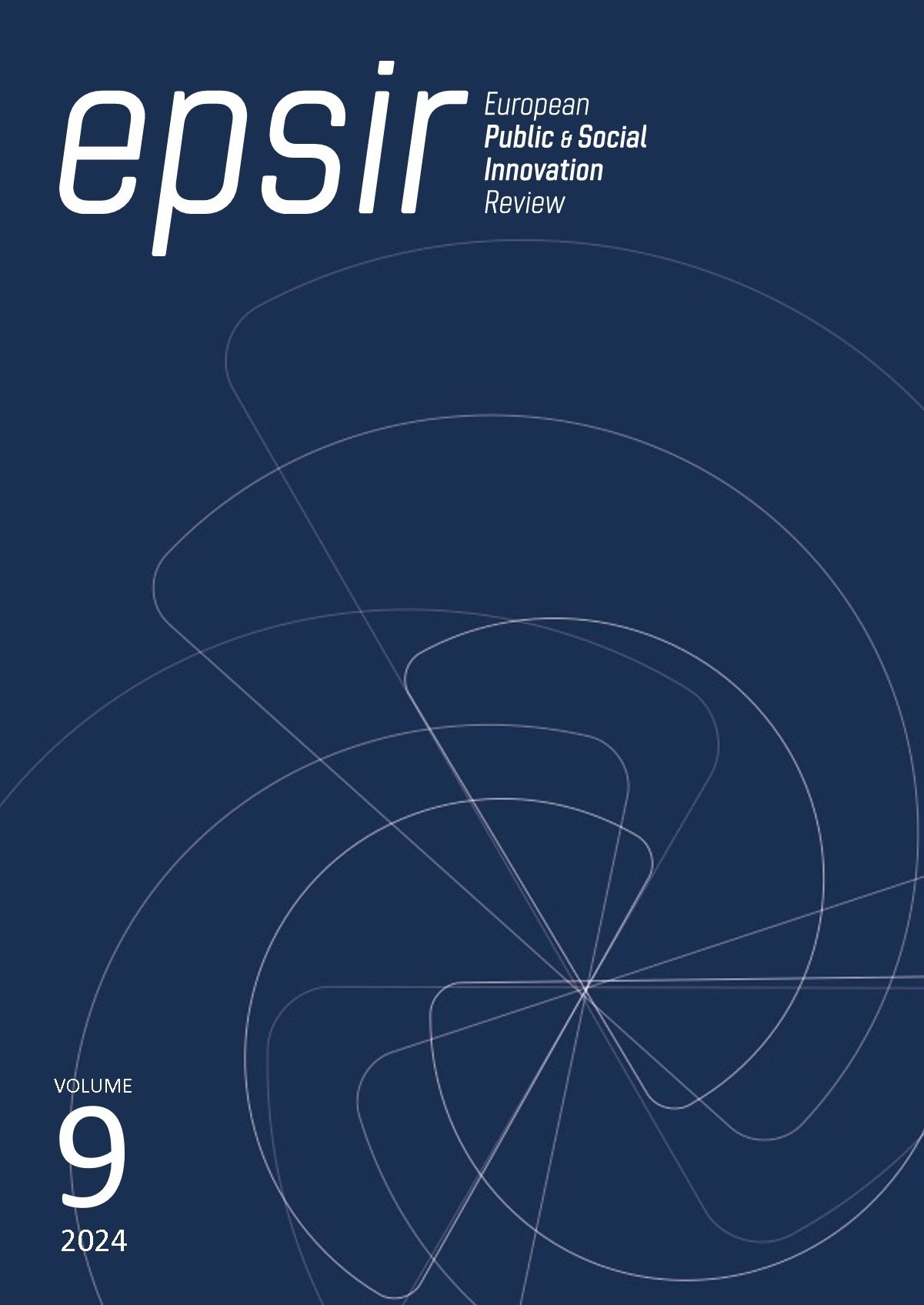An Approach to digital transformation in agribusiness in Peru
DOI:
https://doi.org/10.31637/epsir-2024-1794Keywords:
agriculture 4.0, agribusiness, culture, digitization, digital education, innovation, business model, strategyAbstract
Introduction: Historically, agricultural work has been the livelihood of Latin American countries, therefore, agribusiness currently makes up one of the most important sectors in Peru due to its contribution to GDP. Methodology: Qualitative and interpretive, using in-depth semi-structured interviews.Results: They allowed us to positively corroborate the three research propositions in which three moments of analysis were identified, these being: the current context of digital transformation in agribusiness in Peru, the needs of agribusiness to establish digital transformation and the challenges to which must be faced to apply it. Discussions: The generation of synergies between agribusiness and institutions of the Peruvian State is strategically important. Conclusions: The digital transformation directs agribusiness to durability as long as cultural obstacles of financial leverage and government support are overcome.
Downloads
References
Ayoub, T., Rasool, T. y Rasheed Lone, F. (2022). Towards leveraging the role of machine learning and artificial intelligence in precision agriculture and smart farming Computers and Electronics in Agriculture, 198. https://doi.org/10.1016/j.compag.2022.107119 DOI: https://doi.org/10.1016/j.compag.2022.107119
Balcázar, P., González Arratia, N., Gurrola, G. y Moysen, A. (2013). Investigación cualitativa (2a Ed). Universidad Autónoma del Estado de México.
Beksultanova, A. I. y Czhankhotova, P. (2024). Personnel of digital transformation in agriculture. Sociología y Tecnociencia, 14(1), 106-114. bit.ly/4cGGuSj DOI: https://doi.org/10.24197/st.1.2024.106-114
Centro Nacional de Planeamiento Estratégico (2023). Transformación digital: Panorama actual y principales perspectivas. CEPLAN.
Davis, J. y Goldberg, R. (2021). A concept of agribusiness. Harvard University.
Gobierno del Perú (2024, 24 de mayo). Transformación digital en el Perú. https://www.gob.pe/transformaciondigital
Guest, G., Mc Queen, K. y Namey, E. (2014). Applied thematic analysis. SAGE
Guba, E. G. y Lincoln, Y. S. (1994). Competing paradigms in qualitative research. En N. K. Denzin y Y. S. Lincoln (eds.), Handbook of qualitative research (pp. 105-117). SAGE
Hernández, R., Fernández, C. y Baptista, P. (2010). Metodología de la Investigación. Mc Graw Hill.
Hennink, M. y Weber, M. B. (2013). Quality issues of court reporters and transcriptionists for qualitative research. Qualitative Health Research, 23(5), 700-710. https://doi.org/10.1177/1049732313481502 DOI: https://doi.org/10.1177/1049732313481502
Instituto Nacional de Estadística e Informática. (2024). Producto Bruto Interno creció 1,4% em el primer semestre del 2024. bit.ly/4cDBk9y
Kvale, S. (2007). Doing interviews. (1a Ed.). SAGE. DOI: https://doi.org/10.4135/9781849208963
Klerkx, L. y David, R. (2020). Dealing with the game-changing technologies of Agriculture 4.0: How do we manage diversity and responsibility in food system transition pathways? Global Food Security, 24, https://doi.org/10.1016/j.gfs.2019.100347. DOI: https://doi.org/10.1016/j.gfs.2019.100347
Klerkx, L. y Rose, D. (2022). Advisory support and learning on non-technical aspects of farming: a key topic for extension and education research. The Journal of Agricultural Education and Extension, 28(3), 251–253. https://doi.org/10.1080/1389224X.2022.207 DOI: https://doi.org/10.1080/1389224X.2022.2073112
López, D. (2023). Introducción a la transformación digital. Universidad Oberta de Cataluña.
Peng, Y. y Tao, C. (2022). Can digital transformation promote enterprise performance? —From the perspective of public policy and innovation. Journal of Innovation & Knowledge, 7(3), https://doi.org/10.1016/j.jik.2022.100198 DOI: https://doi.org/10.1016/j.jik.2022.100198
Pinzón, A. (2011). Edafología. Editorial Académica Española.
Sugihono, C. H., Juniarti, H. y Cahyo, N. (2022). Digital transformation in the agriculture sector: Explores the shifting role of extension workers. STI Policy & Management, 7(2), 1-19. https://www.stipmjournal.org/index.php/stipm/article/view/350 DOI: https://doi.org/10.14203/STIPM.2022.350
Trendov, N., Varas, S. y Zeng, M. (2019). Digital Technologies in agriculture and rural areas. Food and Agriculture Organization of the United Nations.
Downloads
Published
How to Cite
Issue
Section
License
Copyright (c) 2024 Giuseppe Vanoni, Alfonso Omaña Guerrero

This work is licensed under a Creative Commons Attribution-NonCommercial-NoDerivatives 4.0 International License.
Authors who publish with this journal agree to the following terms:- Authors retain copyright and grant the journal right of first publication with the work simultaneously licensed under Creative Commons Non Commercial, No Derivatives Attribution 4.0. International (CC BY-NC-ND 4.0.), that allows others to share the work with an acknowledgement of the work's authorship and initial publication in this journal.
- Authors are able to enter into separate, additional contractual arrangements for the non-exclusive distribution of the journal's published version of the work (e.g., post it to an institutional repository or publish it in a book), with an acknowledgement of its initial publication in this journal.
- Authors are permitted and encouraged to post their work online (e.g., in institutional repositories or on their website) prior to and during the submission process, as it can lead to productive exchanges, as well as earlier and greater citation of published work (See The Effect of Open Access).



